Affiliate links on Android Authority may earn us a commission. Learn more.
How to change the wallpaper on any Mac
This tutorial should be pretty straightforward. Wallpapers are a form of expression; people change them all the time for various reasons. Personally, the more challenging thing to do is to find actually good wallpapers versus actually setting them. Still, macOS has a few different methods to change the wallpaper. Here they are.
QUICK ANSWER
To change your wallpaper on Mac, find the image you want to use as your background in Finder. Then, Command+Click on the image to show the context menu and select Set Desktop Picture. The image will become your background.
JUMP TO KEY SECTIONS
How to change the wallpaper on any Mac
There are actually several different ways to do this. We’ll quickly run through each method to change the wallpaper on any Mac.
Through Desktop and Screen Saver
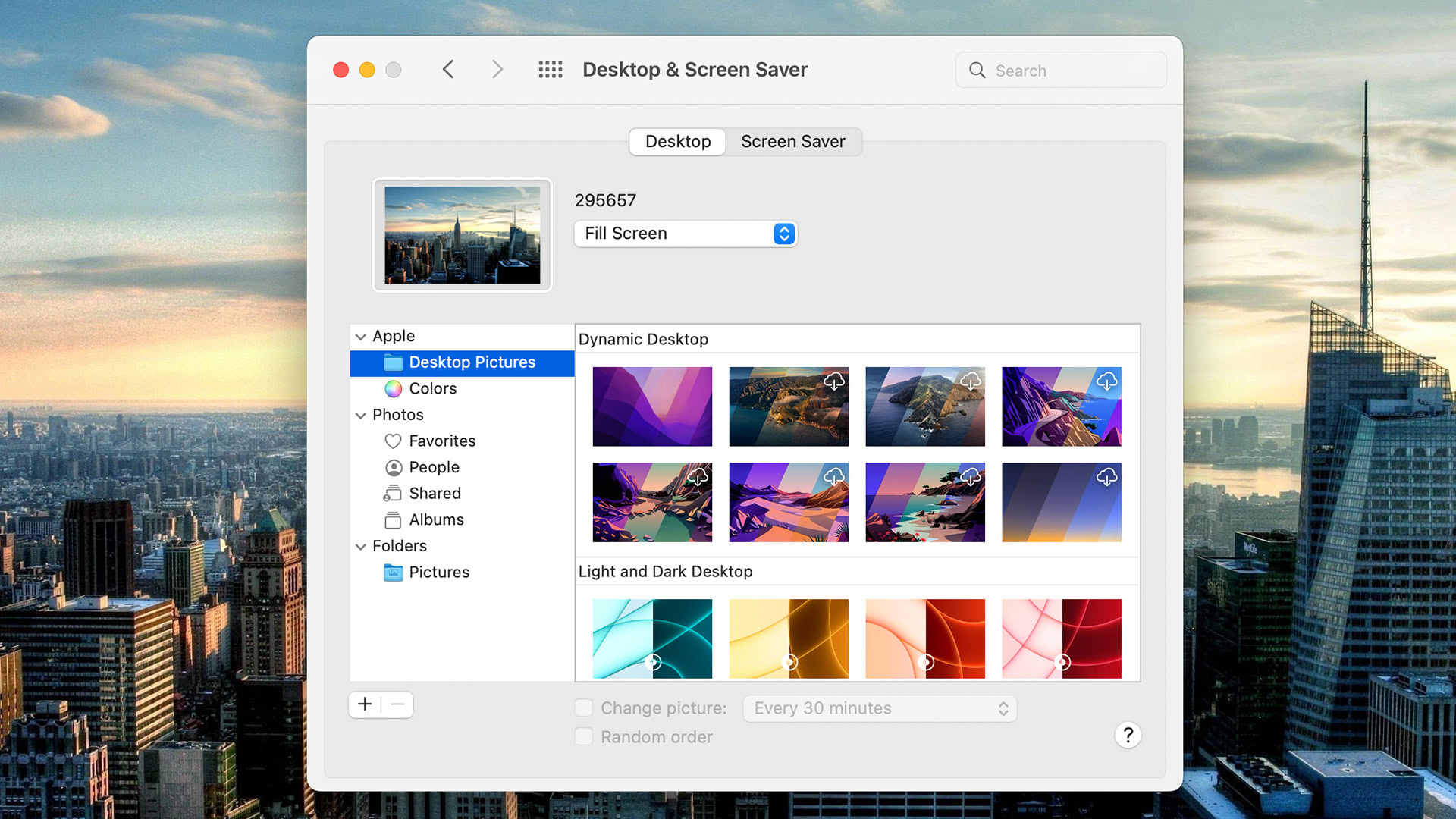
- Click the Apple icon in the top left corner and select System Preferences.
- Tap the Desktop and Screen Saver option.
- A new window opens with some information. Right in the middle, you’ll see a dropdown menu that says Fill Screen. You can use that drop-down to change it to Fit to Screen, Stretch to Fill Screen, Center, or Tile. We recommend keeping it on Fill Screen
- From here, you have a few options. In the left margin, you’ll see Apple, Photos, and Folders.
- Apple — Contains default macOS wallpapers.
- Photos — This contains your photographs.
- Folders — Where you find images you downloaded or have stored elsewhere.
- Select the option you want on the left and then surf in the main box on the right. Clicking any option will immediately change your wallpaper.
- Note — With default macOS wallpapers, you may not have all of them on the machine by default. You may need an Internet connection to download them.
This is kind of the macOS hub for switching wallpapers and the one we recommend using if you’re looking for maximum customization.
Change wallpapers with the context menu

This is a much easier method, but it only works with a single image file at once. A lot of folks use this to apply wallpapers they downloaded.
- Open Finder and navigate to the folder where your desired image is.
- Hit Command+mouse click (or double trackpad click on Macbooks) on the image to bring up the context menu.
- At the bottom of it, there should be the Set Desktop Picture option. Click it.
- That’s it. Your image will become your background with the Fill Screen method by default.
This is my preferred method. I usually download images for use as wallpapers, and I can set them pretty quickly this way without much hassle.
How to set screensavers, rotating wallpapers, live wallpapers and more
Macs have a few different ways to customize your wallpaper experience. We’ll briefly go through the methods on how to set various wallpaper customizations.
Set a screensaver
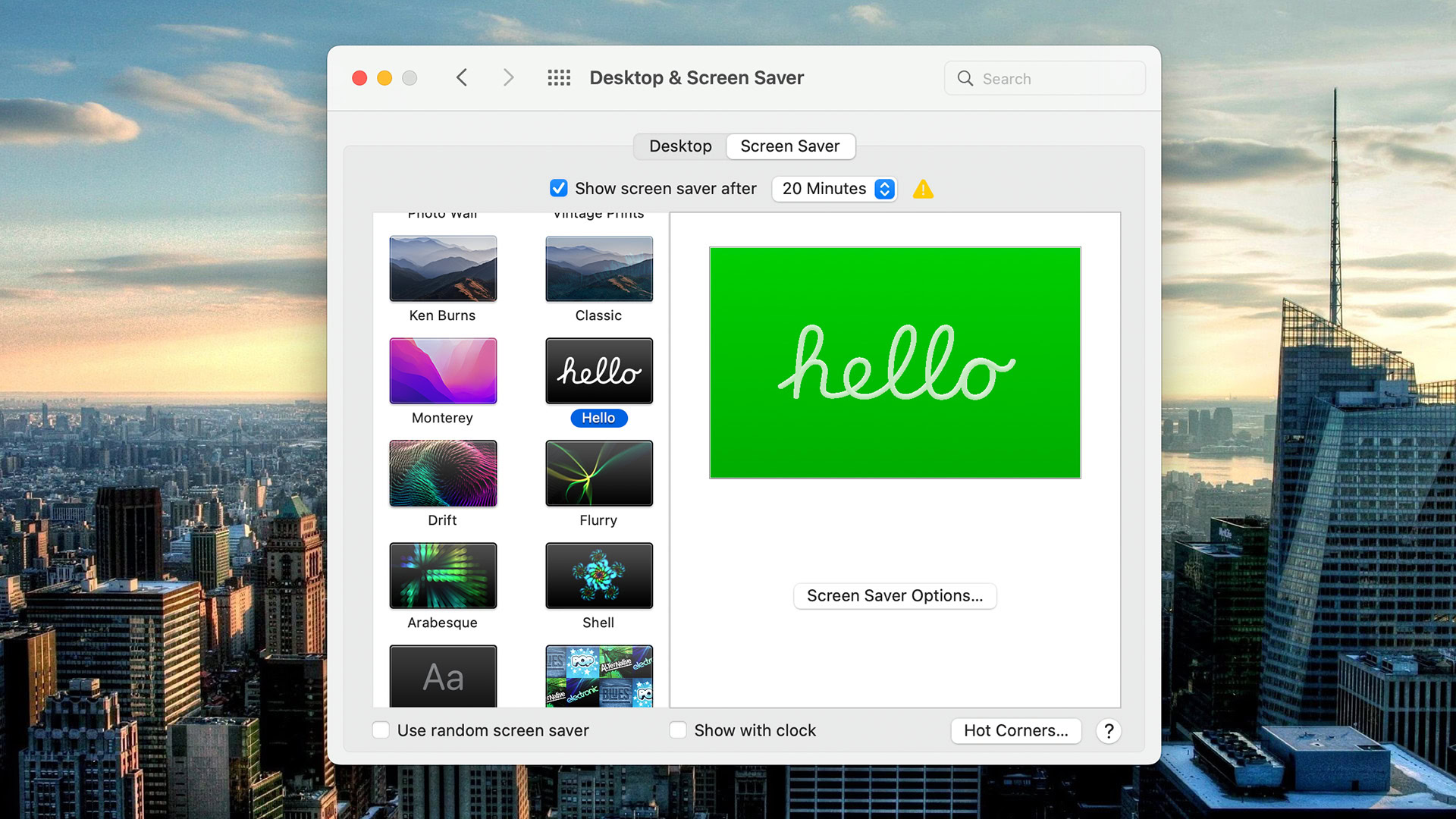
- Tap the Apple icon in the top left corner and then click System Preferences. Open Desktop and Screen Saver from there.
- At the top of the window, tap Screen Saver.
- Above the preview window, there’s a tickbox that turns on the screensaver after so much time. Tick that box and click the drop-down to select your time.
- In the left margin, you’ll see various screensavers. On the right, you’ll see settings and a preview for each screensaver. Select the one you like, customize it, and that’s it. The screensaver should show up after the selected amount of time.
Set wallpapers to rotate on a schedule
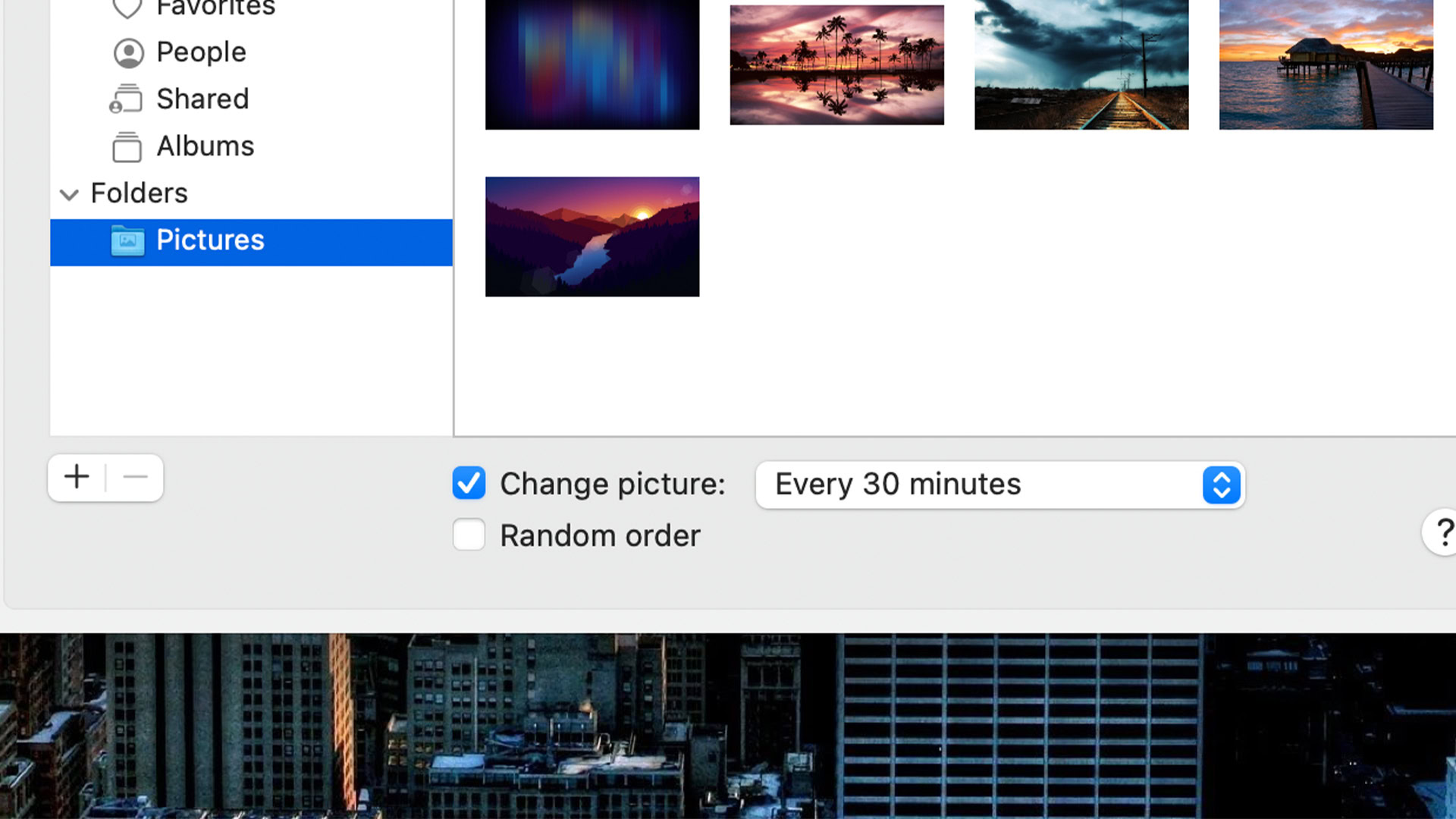
- Open Desktop and Screen Saver as described above.
- Select a folder with multiple images in it. You can’t rotate wallpapers until you perform this step.
- Once the folder is selected in the left margin, tick the Change picture box and select the drop-down menu to select a time interval.
- You can optionally check the Random order box to have your wallpapers randomly shuffled.
- That’s it. Once you select the folder, tick the box, and set a time interval, your Mac will switch wallpapers on its own.
- If you rotate back and forth between light and dark mode on your Mac, you may want to set rotating screen savers that reflect that – it’s a nice way to preserve the aesthetic.
Use dynamic wallpapers
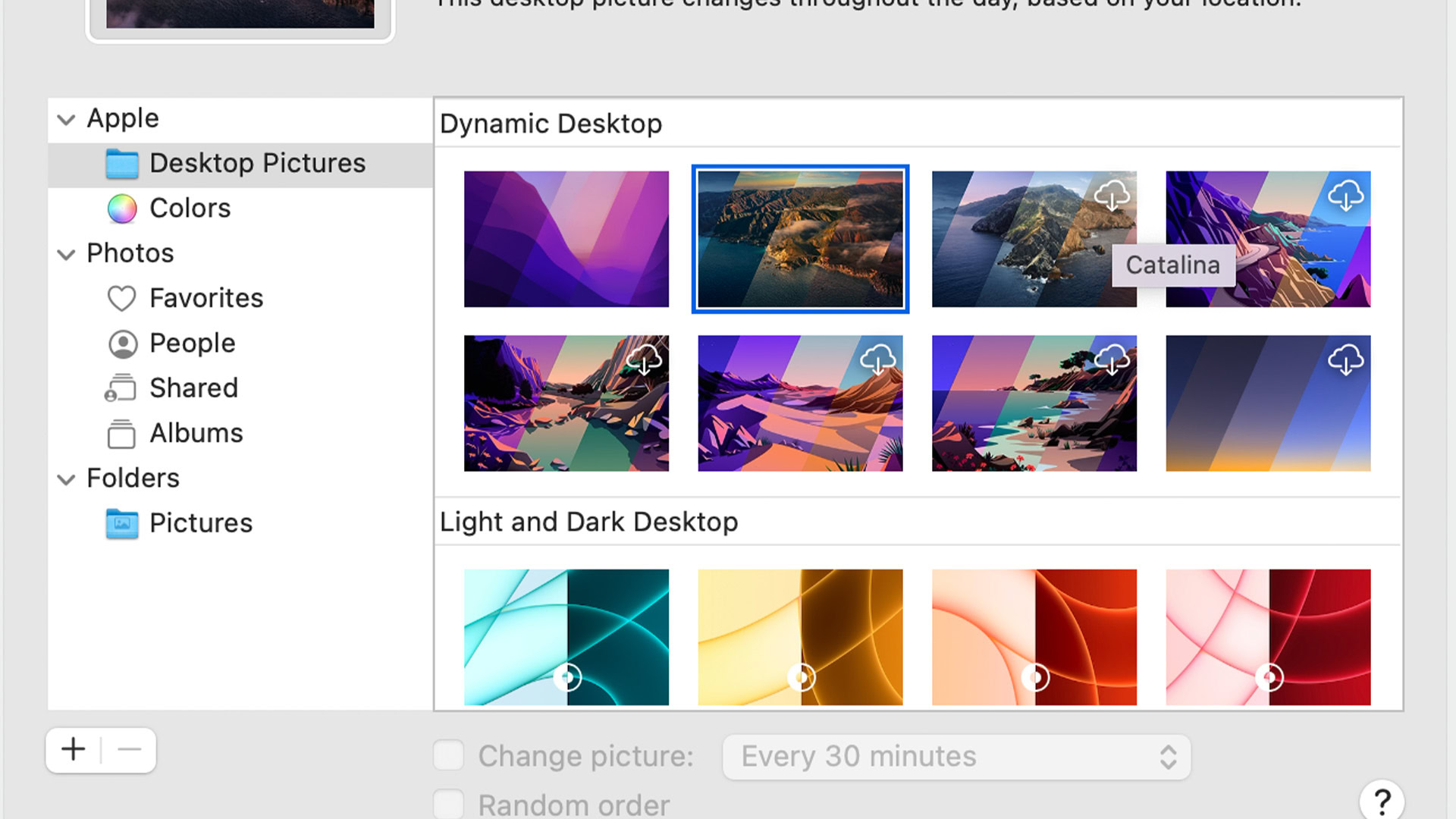
Dynamic wallpapers change on their own over the course of the day. The most common ones you’ll find are default macOS wallpapers of cityscapes or landscapes that change colors based on what time it is where you are. It’s actually really cool, and it isn’t as distracting as a live wallpaper while still giving you that effect. Here’s how to use them.
- Again, open the Desktop and Screen Saver as described above.
- In the left margin, click the right arrow where it says Apple and select Desktop Pictures.
- You’ll see a section called Dynamic Wallpapers. These wallpapers have a special property. They change colors based on what time of day it is. My Macbook Air has eight by default, and I had to download seven of them. Select the one you want and it’ll change your background to it. The color changes happen automatically without user input.
- You can find more dynamic wallpapers on websites like Dynamic Wallpaper Club or with apps like 24 Hour Wallpaper (Mac Store link).
- You can also make your own with apps like Dynapaper (Mac App Store link).
How to find and set live wallpapers on Mac
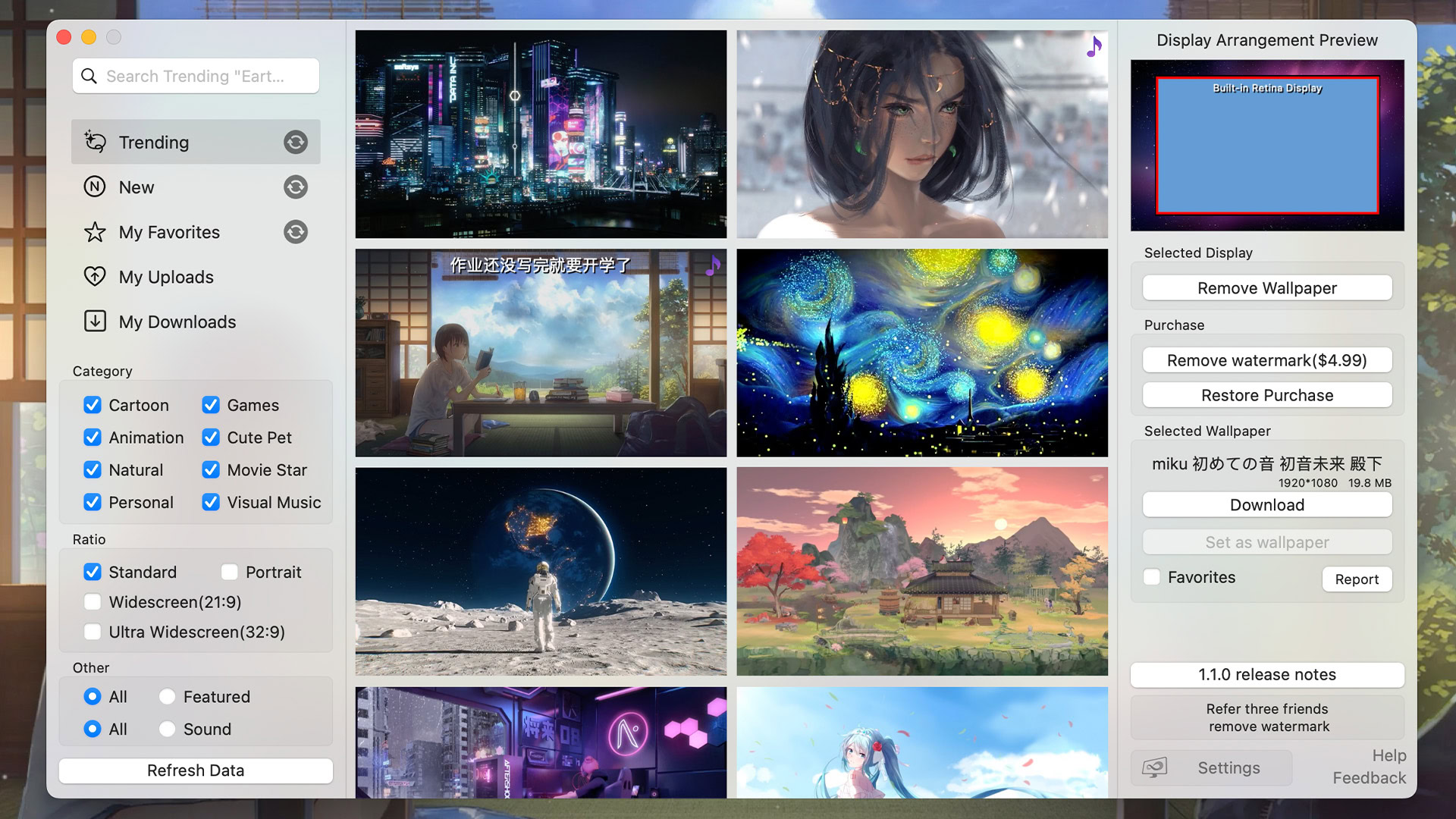
We may make a longer tutorial for this eventually, but here is where to find and how to use live wallpapers on macOS.
- The vast majority of live wallpapers are available in apps. Some popular options include iWallpaper, Earth 3D Lite, and Live Wallpapers HD & Weather.
- Install the apps above or the one you want. Generally, the app should have instructions included on how to download and set a live wallpaper to your Mac. Just follow the instructions.
- Note — In all the apps we tested, the app has to be installed for the wallpapers to work. If you uninstall the app, the live wallpaper usually stops functioning.
Popular and proper resolutions for Mac wallpapers
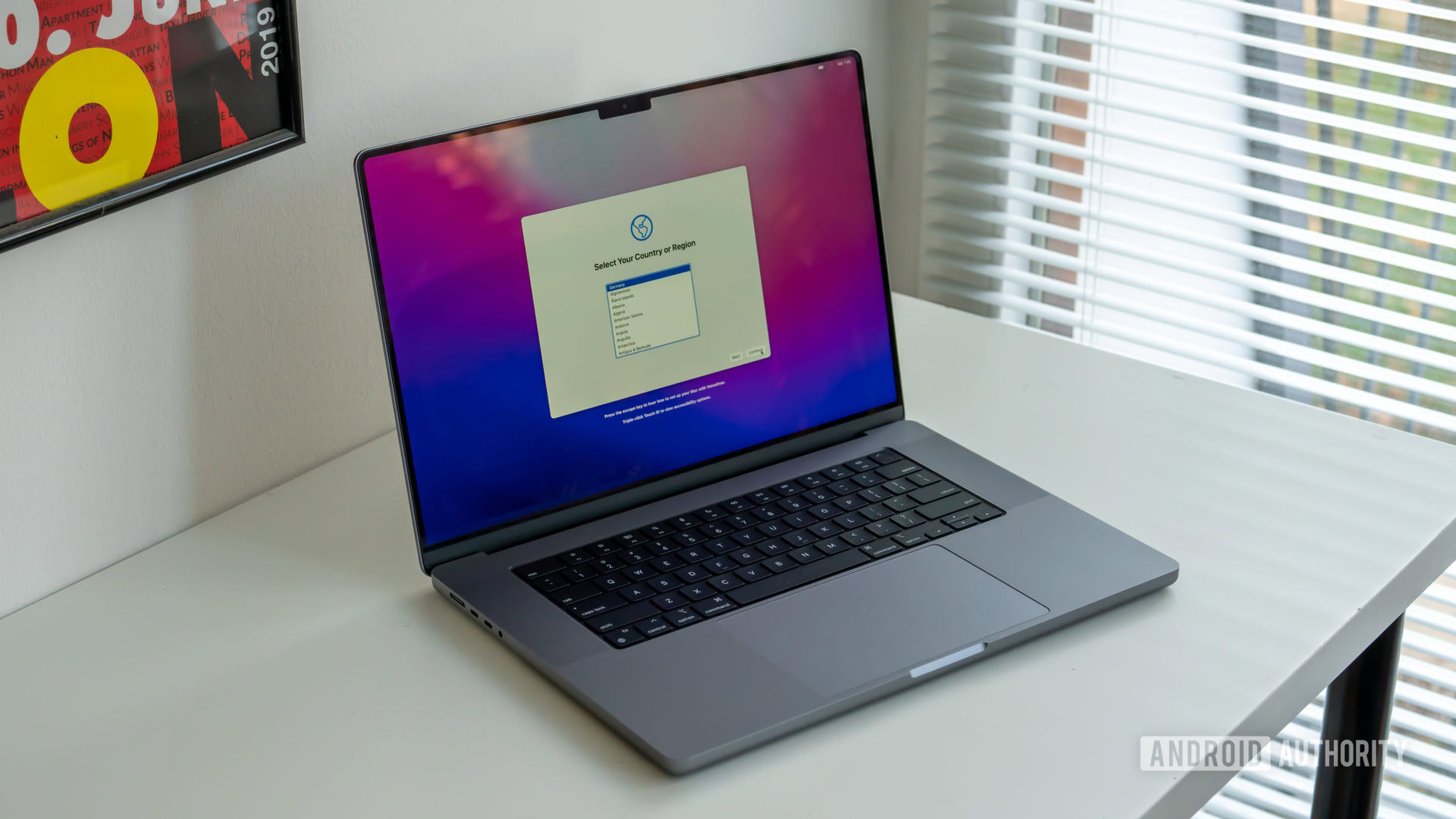
Having the proper resolution and aspect ratio is important when setting a wallpaper. Your background will look blurry if the image is too low of a resolution, and it’ll look stretched and warped if it isn’t the correct aspect ratio.
To help take some of the guesswork out of it, we’ve included a helpful list of Macs and MacBooks along with their native resolutions and aspect ratios. That should help make it easier to find nice, sharp, properly sized wallpapers for your Mac.
MacBook Pro models:
The aspect ratio includes the full area where a wallpaper will be seen. Some Macbook Pros have a notch. In those cases, the aspect ratio represents the screen under the notch and menu bar where the wallpaper will actually be seen.
- 2021 16-inch MacBook Pro — 3456 x 2234 with a 16:10 aspect ratio
- 2021 14-inch MacBook Pro — 3024 x 1964 with a 16:10 aspect ratio
- 2019 16-inch MacBook Pro — 3072 x 1920 with a 16:10 aspect ratio
- 2012 15-inch MacBook Pro — 2880 x 1800 with a 16:10 aspect ratio
- 2012 13-inch MacBook Pro — 2560 x 1600 with a 16:10 aspect ratio
MacBook Air models:
- 2022 13.6-inch MacBook Air — 2560 x 1664 with a 16:10 aspect ratio
- 2018 13.3-inch MacBook Air — 2560 x 1600 with a 16:10 aspect ratio
iMac models:
- 2021 24-inch iMac — 4480 x 2520 with a 16:9 aspect ratio
- 2015 21.5-inch iMac — 4090 x 2304 with a 16:9 aspect ratio
- Note — Some 2015 iMacs come with different screens. However, they should both have the same native resolution and aspect ratio.
- 2014 27-inch iMac — 5120 x 2880 with a 16:9 aspect ratio
- All iMac Pro models — 5120 x 2880 with a 16:9 aspect ratio.
Apple external displays:
- Apple Pro Display XDR — 6016 x 3384 with a 16:9 aspect ratio.
- Apple Studio Display — 5120 x 2880 with a 16:9 aspect ratio.
If you have an external display that you purchased yourself, you’ll have to check with the manufacturer to see that display’s resolution and aspect ratio for properly sized wallpapers.
Read next: How to convert Apple HEIC to JPG format
FAQ
Usually, it’s because the image you used is too low of a resolution or in the wrong aspect ratio. Low-resolution images can look grainy or blurry on higher resolution displays, while wrongly shaped wallpapers can look stretched or warped.
Any image can be a wallpaper, so anywhere you can find pretty images is a place where you can find pretty wallpapers. We recommend looking in the Mac App Store for wallpaper apps or searching for high-resolution Mac wallpapers on Google.
Subjectively, that’s entirely up to you since it’s a visual thing, and people like different visual things. However, we can say objectively that the best wallpapers will be of a similar (or higher) resolution and the same aspect ratio as your Mac or MacBook’s screen. That will deliver maximum sharpness and minimal warping or blurring.
Not natively, no. However, with apps like DynaPaper, you may be able to convert one into a live wallpaper if you really want to.
Apple does a lot of this work for you by automatically finding images when you’re in the Desktop and Screen Saver window. Your best bet is just to stash your wallpaper images into a wallpaper folder and let the Desktop and Screen Saver app do the rest.